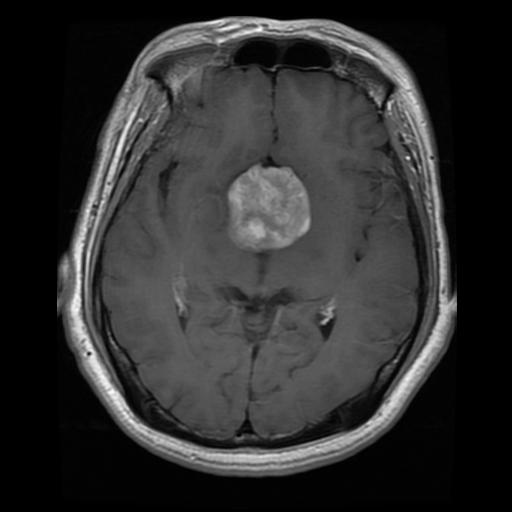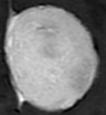No problem! You can chat with your writer anytime through our easy-to-use system. Whether you need to add details, clarify something, or adjust the rubric, they’ll adapt on the fly—even after the writing’s started—so your essay turns out just right.
2-D DWT
Statistical Features
Can You Meet a Tight Deadline for My Essay?
You bet! Need it fast? Our skilled writers can deliver a high-quality essay in as little as 24 hours. Pick your deadline when you order, and we’ll make it happen—whether it’s a rush job or a standard 10-day turnaround, we’ve got your back.
Tumor Type
Do You Offer Revisions or Refunds?
Absolutely. You get free revisions for 14 days after delivery to tweak anything you need. Not happy? We’ll keep at it until you are. Missed a deadline? You’re covered with a full refund—no hassle, no fuss.
Figure 1: Framework of the proposed system
A. Database
The dataset used to train and test our algorithm consists of 3064 brain MRI slices collected from 233 patients with three kinds of brain tumors, Meningioma, Glioma, and Pituitary.
How Do You Ensure My Essay Hits the Grade I Want?
We pair you with a subject expert who digs into your requirements and researches thoroughly. After writing, it goes through strict quality checks to match our standards and your goals. It’s a process built to get you the grade you’re aiming for.



(a) (b) (c)



(d) (e) (f)
What’s the Cost to Write My Essay?
We keep it budget-friendly—starting at just $10 per page. The price depends on pages, urgency, and writer level, but there’s no hidden fees. Order early for the best rates, and you’ll get premium help without draining your wallet.
Fig. 2: Sample images from database, (a) Meningioma, (b) Glioma, and (c) Pituitary and its tumor region (d), (e), and (f) respectively
The total number of slices for each type of tumor is: 708 slices for Meningioma tumor, 1426 slices for Glioma tumor, and 930 slices for Pituitary tumor [20]. The tumor region was manually segmented by three radiologists. The original slices along with its tumor region are available online from Figshare website [21]. In figure 2, three different MRI images are presented along with its tumor region.
B. Discrete Wavelet Transform
Wavelet Transform (WT) is a powerful tool that transforms the signal from the time domain into the wavelet domain to analyze the time and frequency contents at the same time [22]. For high frequency signals, Wavelet Transform gives high time resolution and low frequency resolution and for low frequency signals, it gives high frequency resolution and low time resolution. A basis function called “mother wavelet” is scaled and translated to achieve the time and frequency resolution. Wavelet basis function is generated from the mother wavelet as follows [23]:
How Can I Trust Your Service Isn’t a Scam?
We’ve got a rock-solid rep—our writers are vetted pros with degrees and proven skills. You’ll chat with them upfront, track your order, and pay securely. We’re legit, safe, and here to boost your writing with samples and support you can rely on.
ψa,bx=1aψx-ba, a ,b ∈Z a > 0 ( SEQ Equation * ARABIC 1)
where
ψx, is the mother wavelet, and (a, b) represent the dilation and translation parameters respectively.
By applying 2-D DWT, the image is decomposed into four subbands labeled LL which represent approximation image, LH, HL and HH that correspond to detail images as shown in figure 3. The approximation and detail coefficients are used for texture features representation. In this algorithm, we implement three levels of 2-D DWT using “symlet4” filter and all the subbands images (LL, LH, HL, and HH) are utilized for feature extraction results in 12 subband images. Combining the approximation and detail coefficient can improve the discrimination ability of the classification algorithm [24].
Fig. 3: One level filter bank for computation of 2-D DWT,
honis a low pass filter and
h1nis a high pass filter
C. Gabor Filter
A Gabor filter is a linear filter that is obtained by modulating a sinusoidal wave with a Gaussian function. The frequency and orientation of Gabor filter are similar to the human visual system and it can be used for texture description. The Gabor function is a useful tool in computer vision and image processing, especially for texture analysis, due to its optimal localization properties in both the spatial and frequency domain [25]. 2-D Gabor filter is defined as [10]:
Are Writing Services Legal?
Yes, 100%! They’re a legit tool for students, offering samples to guide your own work. Used right, they sharpen your skills and boost grades—think of it as a learning hack, totally ethical and above board.
Gx,y,λ,θ, ϕ,σ,γ=e-x’2+γ2y’2σ2*ei 2πx’λ+ψ ( SEQ Equation * ARABIC 2)
Where
x’=x cosθ+ysinθ and y’=- x cosθ+ysinθ.
(
λ) is the wavelength of the sinusoidal form, (
θ) is the orientation of the Gabor function, (
ϕ) is the phase offset, (
γ) is the spatial aspect ratio, and (
Can Your Writers Tackle Tough Research Topics?
Absolutely! Our team includes experts with advanced degrees who’ve mastered everything from astrophysics to ancient history. Give us your topic, and we’ll match you with a pro who’ll deliver a deep, well-researched paper that nails your requirements.
σ) is the standard deviation of the Gaussian envelope. To calculate the textural features of an image a set of Gabor filters are used with different frequencies and orientations [13]. We implement Gabor filter with three wavelengths (2, 4, and 8) and five orientations (0
°,45
°, 90
°, 135
°, and 180
°) which results in 15 filters, each filter is convolved with the input image generating 15 filtered images as shown in figure 4.





(2, 0
°) (2, 45
What’s Your Research Paper Writing Process?
It’s simple: you order, we assign a field expert, they research and draft, and you can weigh in anytime. Editors polish it up, and you get a finished paper with time to spare—straightforward and effective.
°) (2, 90
°) (2, 135
°) (2, 180
°)






(4, 0
°) (4, 45
°) (4, 90
Will My References Meet Academic Standards?
For sure. We nail every citation style with precision, using top-tier sources like journals and books. Your bibliography will be flawless, making your paper look pro and pass any scrutiny.
°) (4, 135
°) (4, 180
°)
(8, 0
°) (8, 45
°) (8, 90
How Do You Make My Essay Unique?
We craft every essay from scratch, focusing on what sets your assignment apart—a bold thesis, fresh ideas, or a standout voice. It’s all custom, designed to catch eyes and earn praise.
°) (8, 135
Can You Help With Creative Writing Assignments?
Yes! Beyond academic essays, our writers excel at creative pieces—short stories, personal narratives, anything you need. They’ll blend imagination with structure to deliver something truly original.
°) (8, 180
°)
Fig. 4: Resulted images from 2-D Gabor filter with three values of wavelengths and five values of orientations, numbers in brackets are (wavelength, orientation)
D. Statistical Features
Texture of an image can be described easily using statistical approach [26]. These features are widely used in the classification of biomedical images [24]. We consider four first order statistics (mean, variance, skewness, and kurtosis) that is calculated from the histogram of the image and six second order statistics (Contrast, Correlation, Energy, Homogeneity, Entropy, and Maximum probability) which is calculated from the Gray Level Co-occurrence Matrix (GLCM). The GLCM is a 2-D histogram that describes the frequency of occurrence of two pixels separated by a certain distance. Table 1 summarizes these features.
As a result, 10 statistical features were obtained from each subband image resulted from three levels of 2-D DWT so, the total number of features extracted from the wavelet transform is 120 features. In a similar way, the same 10 statistical features were extracted from the images generated using Gabor filters results in 150 features, these features are combined to generate the feature vector with the size of 270 features.
Table 1: A LIST OF SELECTED STATISTICAL FEATURES
| Feature |
Description |
Formula |
| Mean (m) |
Average intensity of the image |
m=∑i=0L-1i*pi |
| Variance ( |

















